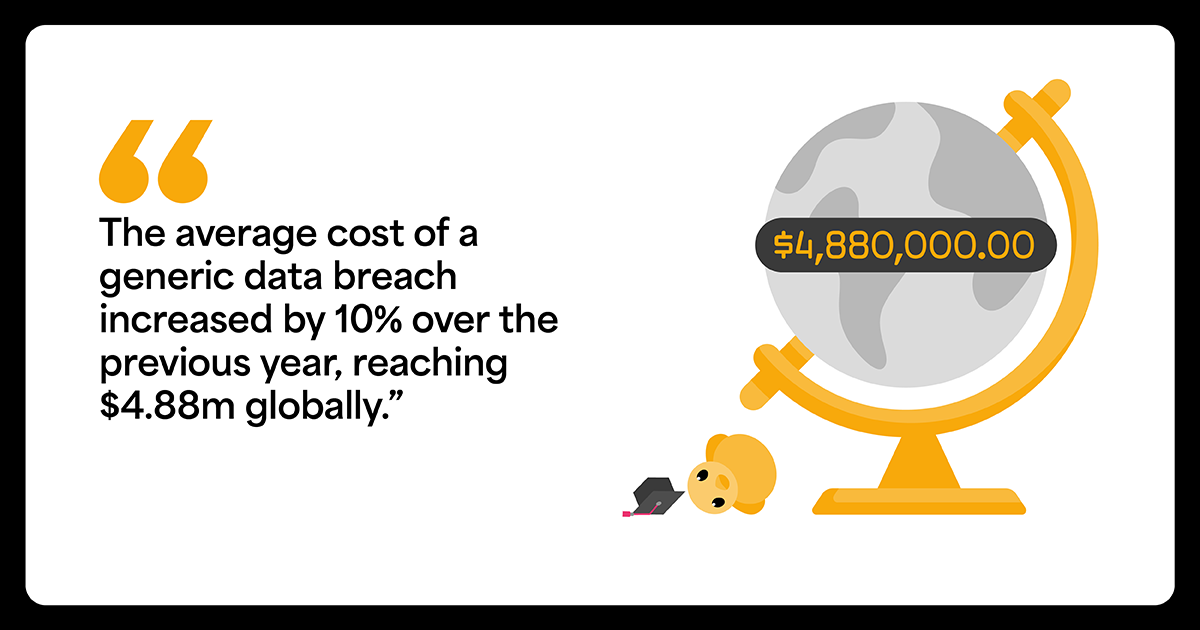Blog
Platform Learns Company Store Under Attack? Cloud Login Data Exfiltration Extortion Now Averages $5.21 Million According to IBM’s Report

According to IBM’s 2024 Cost of a Data Breach Report, ransomware and other extortion attacks fall into three main categories: ransomware, data exfiltration, and destructive attacks. This classification showcases the wide range of cyberthreats and highlights their serious operational and financial impact on various organizations.
The report says destructive attacks are the most expensive—at $5.68 million per incident—ahead of ransomware and data exfiltration. But data exfiltration is an important factor to consider; hackers often take sensitive information through data exfiltration and leverage it to sell or release it unless a ransom is paid.
Additionally, there are other consequences of data exfiltration beyond financial losses alone. It often covers long-term reputational damage, costs for post-breach responses (like identity theft protection for affected customers) and non-compliance penalties.
It takes on average 291 days to detect and contain these breaches, giving attackers time to exploit stolen data, IBM research shows. Increased use of hybrid as well as cloud environments has compounded the problem with massive amounts of data stored across these platforms.
Visibility gaps create exploitable vulnerabilities allowing breaches involving “shadow data” – unmanaged or unauthorized information. These breaches significantly prolong breach lifecycles and increase overall costs.
In fact, breaches involving shadow data inflate costs by 16.2% – an average expense of $5.27 million. This highlights the need for better data management and oversight to reduce exfiltration risk.

8 Insights from the IBM 2024 Cost of a Data Breach Report
- The average cost of a generic data breach increased by 10% over the previous year, reaching $4.88 million globally.
- Destructive extortion attacks are the most expensive, averaging $5.68 million per breach.
- 46% of breaches involved customer PII, the most targeted type of data in exfiltration attacks.
- Shadow data extends the breach lifecycle, which averages 291 days for detection and containment.
- Ransomware victims who involved law enforcement saved nearly $1 million on average.
- The healthcare industry remains the most targeted, with average breach costs of $9.77 million.
- AI and automation can reduce breach costs by an average of $2.2 million when used extensively.
- Breaches lasting over 200 days cost an average of $5.46 million, stressing the need for quick detection.
Preventing Data Exfiltration with BlackFog
BlackFog is the leader in on-device data privacy, data security and ransomware prevention. Our behavioral analysis and anti data exfiltration (ADX) technology stops hackers before they even get started. Our cyberthreat prevention software prevents ransomware, spyware, malware, phishing, unauthorized data collection and profiling and mitigates the risks associated with data breaches and insider threats. BlackFog blocks threats across mobile and desktop endpoints, protecting organizations data and privacy, and strengthening regulatory compliance.
To protect your organization from ransomware and data exfiltration, consider using BlackFog’s anti data exfiltration (ADX) technology.
Unlike traditional antivirus software, BlackFog’s ADX employs advanced AI and behavioral analysis to monitor and block suspicious outbound data transfers in real-time, stopping ransomware before data is leaked.
Take steps to secure your data and protect your business with BlackFog ADX.
Contact us at This email address is being protected from spambots. You need JavaScript enabled to view it..

